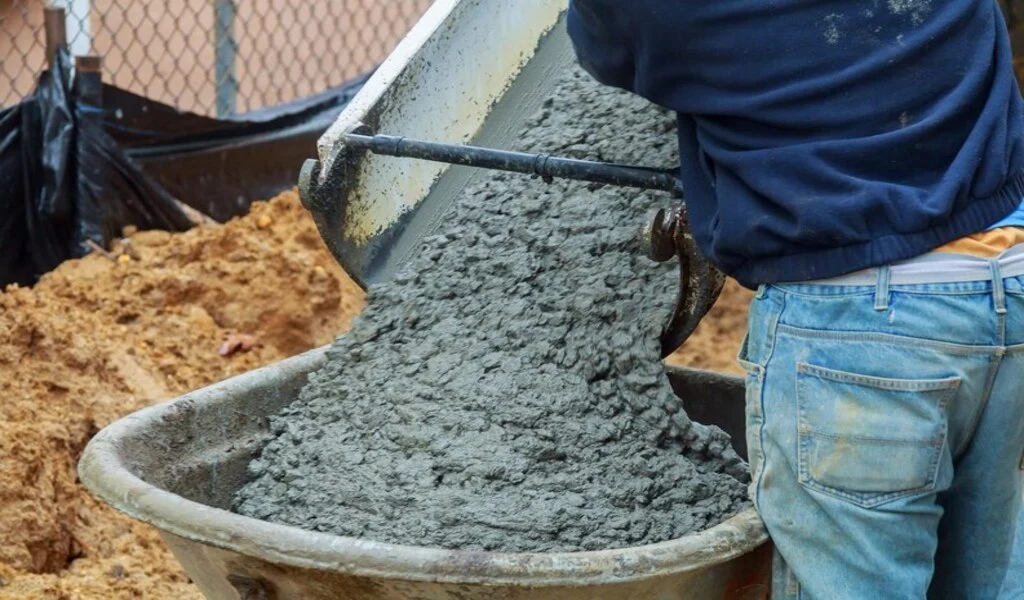Business
The Science Behind Concrete Mixing Ratios: Key Factors to Consider

We have all come across the importance and use of concrete in our lives. Concrete is used widely in the construction industry.
Achieving the desired properties in concrete involves careful consideration of various factors, with one of the most critical being the mixing ratios of its components.
Let us look into the in-depth science behind concrete mixing ratios and the key factors to consider to create high-quality and long-lasting concrete structures.
What is a Concrete Mixing Ratio
In layman’s terms, a concrete mixing ratio means the proportion in which the components of concrete like cement, sand and aggregates (gravel or crushed stone) are mixed.
This ratio dictates the strength, durability, and workability and it’s crucial to get it right for you construction project.
The typical concrete mixing ratio is 4:2:1. That is 4 parts cement, 2 parts sand and 1 part aggregate. Please note that this ratio can be different according to the needs and applications.
For example, the concrete mixing ratio for slabs is different from that of floors. We hope you got the idea.
Basics of Concrete Mixtures
Let us start with the basics of concrete mixtures. Concrete is composed of several primary ingredients. Let’s take a look at them.
Cement
This is the binding agent that holds the concrete mixture together. Portland cement is the most common type used in construction.
Aggregates
Aggregates are typically a combination of sand, gravel, and crushed stone. They offer bulk and stability to the mixture.
Water
Water helps in activating chemical reactions that lead to the hardening of the concrete.
Admixtures
They are used to modify the properties of concrete, including improving workability, reducing water content, or enhancing durability.
Science of Concrete Mixing Ratios
The concrete mixing ratio is also known as concrete mix designs. It refers to the proportions of cement, aggregates, water and admixtures that are used to create an ideal concrete mixture.
Achieving the right mixing ratio for concrete is an important aspect, as it directly affects the strength of the concrete, workability, durability and a number of other properties.
The science behind these ratios actually involves understanding the role played by each ingredient and their interaction with each other during the hydration process.
Cement-to-Water Ratio
The cement-to-water ratio is a fundamental factor in concrete mix design. For instance, too much water can weaken the mixture, while a small amount can lead to insufficient hydration.
A balanced mix ratio can help ensure proper chemical reaction which then results in optimal strength.
Aggregate Proportions
The size and gradation of aggregates play a significant role in concrete’s workability and strength. A well-graded mix with a variety of aggregate sizes enhances the concrete’s ability to resist cracking and achieve the desired strength.
Admixtures
Admixtures are used to modify various properties of concrete. For example, water-reducing admixtures can help improve workability, whereas air-entraining admixtures enhance freeze-thaw resistance.
The type and quantity of admixtures must be carefully selected to achieve the desired performance.
Environmental Conditions
The curing process of concrete is influenced by environmental factors, such as temperature and humidity. Also, proper curing is an important factor in the development of strength and durability.
Strength Requirements
Different construction projects require concrete with varying levels of strength. Engineers and architects must specify the required compressive strength and the mix design must be adjusted accordingly.
Factors to Consider When Designing Concrete Mix Ratios
Project Requirements
The intended use of the concrete, whether it’s for a residential driveway or a high-rise building, dictates the mix design. The required strength, durability, and workability all depend on the project’s specific needs.
Materials Availability
The availability of local materials, such as aggregates and cement types, can impact the mix design. With the usage of locally sourced materials, you can save costs and they are also environmentally friendly.
Testing and Quality Control
Regular testing and quality control measures are essential to ensure that the concrete mix meets the desired specifications. Adjustments may be needed during the construction process to maintain consistency.
Sustainability
In modern construction, sustainability is a growing concern. Engineers and builders may consider using alternative cementitious materials like fly ash or slag to reduce the environmental impact of concrete.
Wrapping Up
As we have seen anove, the science behind the concrete mix ratio is a complex yet essential aspect of the construction industry.
It is important to achieve the right mix ratio of cement, aggregates, water, and admixtures to meet the project requirements for strength, durability, and workability.
You can consider the factors given above to ensure the success of projects and the longevity of concrete structures.
In the case of reinforced cement concrete, selecting one of the reputable TMT steel bars manufacturers in Kerala for steel is important to ensure the quality of the RCC.
SEE ALSO: Top 5 Stocks Preferred By Wall Street Analysts Amid September’s Market Uncertainty






























